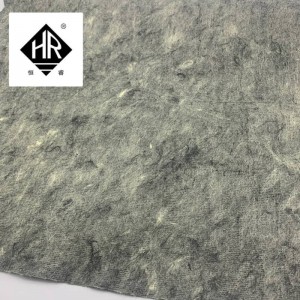In recent years, the main technical routes and existing problems in the research of flame retardant and anti-static fabrics at home and abroad can be summarized as follows:
(1) The fabrics made of cotton, polyester/cotton and other materials are finished with flame retardant and anti-static agent, so as to achieve the compatibility of flame retardant and anti-static properties. Due to the interaction of organic flame retardant and mechanical antistatic agent, the flame retardant and antistatic properties of the fabric are often degraded, and the strength of the fabric is greatly reduced and the feel is rough and hard. At the same time, the washing resistance of the double anti fabric is very poor, and it is difficult to reach the practical degree.aramid paper manufacturer
(2) The fabric is treated with flame retardant and anti-static coating. That is, a layer of flame retardant and anti-static film covering is uniformly formed on the surface of the fabric. This method can improve the durability and strength of the fabric. But the coating is easy to age, flame retardant anti-static fabric performance is not good, and the feel is difficult to adjust properly.aramid paper manufacturer
(3) Embed the conductive fiber filament into the ordinary fabric, and then finish the fabric after flame retardant. This method can obtain good performance of flame retardant anti-static fabric, but the flame retardant washing resistance is poor, the fabric strength is low, feel style is still too thick and hard.aramid paper manufacturer
(4) Make flame retardant fiber and cotton or general composite fiber blended into yarn to make fabric, and then weave conductive fiber filament in the fabric, so as to give the fabric double anti function. This method avoids the flame-retardant finishing of the fabric and improves the strength and feel of the double anti fabric to a certain extent. However, the flame retardancy of blended yarn is difficult to meet the requirements because the cotton or other composite materials in blended yarn are still flammable materials. At the same time, if the blended yarn contains polyester and other composite fiber, there will be shrinkage and melting drop phenomenon in the fire. The strength of fabric in some special applications (such as making field clothing, fire retardant clothing) still can not meet the requirements. To sum up, the key problem in the research and development of flame retardant and anti-static fabrics at home and abroad is: how to make flame retardant and anti-static fabrics with high strength, good hand feel and full washing resistance under the premise of ensuring the fabric has good anti-static fabric performance and flame retardant fabric performance.
Post time: Dec-08-2022

